Seam sealing electronic packages provides a barrier for internal components, and it is a critical step in the package manufacturing process. It can be done using laser welding or resistance seam welding
So, what’s the best-joining technology for sealing packages, and how to choose properly?
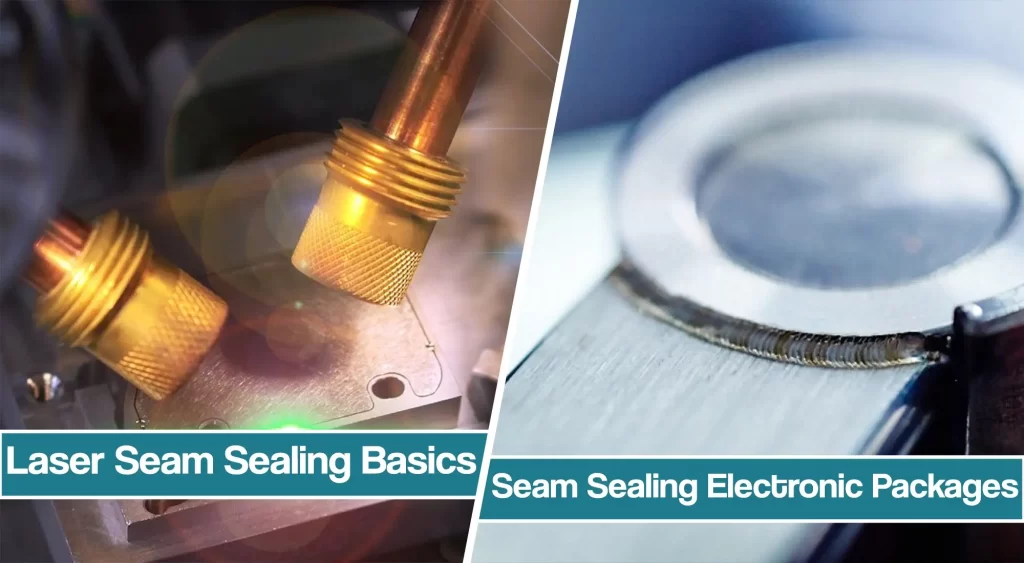
The answer is it depends! Resistance welding and laser welding are both well-established technologies. However, selecting the right joining technology will be based on package design, throughput, and layout.
When laser seam sealing, careful attention must be paid to critical factors such as proper material choice, part plating, joint geometry, and tolerances. In addition, understanding the role of thermal input will be essential.
About seam sealing electronic packages
Seam sealing is the process that permanently bonds the electronic packages and lid of a device, providing a barrier for the internal components for the device’s operational lifetime.
This is typically the last critical step in the package manufacturing process, which is among the most important. The completed product performs a vital function and has a high dollar value, so creating a barrier to contamination ingress is essential.
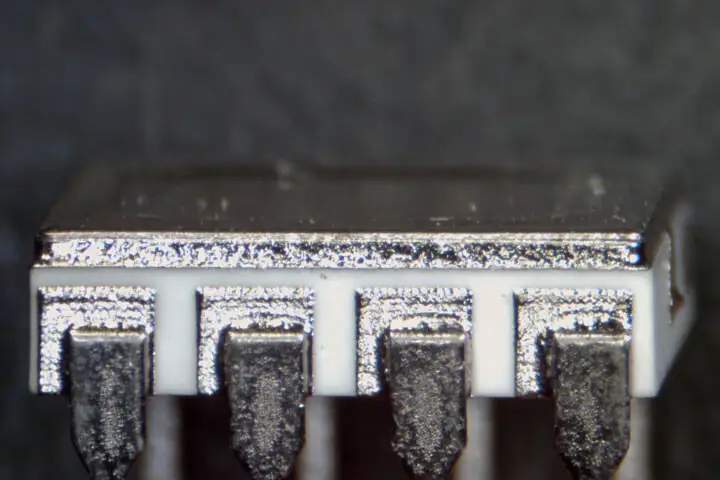
The stakes are high – optoelectronic packages for fiber-optic cables transmitting signals sometimes in the middle of the ocean must last for a very long time because replacement is difficult and costly. Similarly, aerospace RF/microwave packages perform essential functions, making it imperative to prevent external environmental conditions from penetrating the package, even in highly aggressive environments.
Controlling the component manufacturing process and aligning the device components to make them “laser welding friendly” will allow manufacturers to achieve process yields of over 99%.
Laser Seam Sealing Basics
Seam sealing is the method for bonding a lid to a package base to create a barrier to prevent contamination ingress. It can be done using either laser or resistance welding with electrode.
Resistance seam welding has and continues to provide a solution for many seam-sealing applications. However, interest in and use of laser welding is increasing.
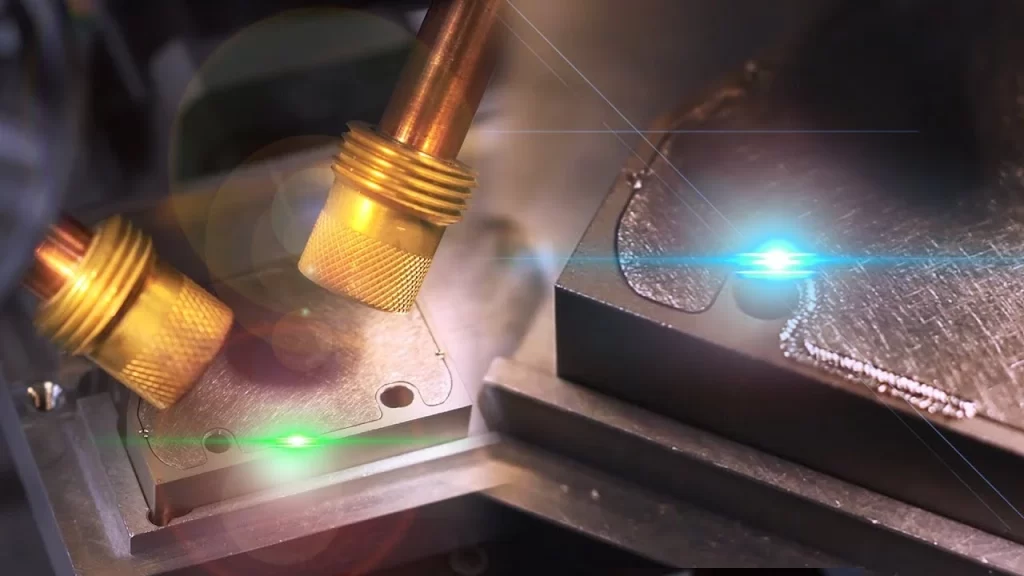
It offers some unique processing capabilities, primarily a great deal of flexibility in terms of joint geometries, package design and size, and heat input control.
It also allows aluminum welding, which is widely used for aerospace packages and cannot be done by resistance welding. The laser equipment also facilitates equipment multi-tasking since the laser can be used for both seam sealing and welding of internal components.
Poor seam sealing can cause leaks or micro-cracks which later on allow moisture and contaminants to enter the electronic packages. Cracks and leaks may compromise the operation of the internal components directly or by internal pressure variation which results from the temperature cycling of components.
Besides laser hermetic sealing, RF/microwave packages should prevent signal spillover from an adjacent part of the package. Spacing several spot welds every 0.04-inch will contain the signal within the device compartment, ensuring the correct functionality of all device parts.
If we follow the “everything leaks,” approach, the seam sealing must complete a particular leak test MIL/IEC standard or fitness. The standard defines as the hermeticity or rate of leakage of seam-sealed parts. The size of a leak is measured by the volume of helium in cubic centimeters (cc) that would pass each second with a pressure difference of 1 atmosphere (atm-cc/sec).
A typical specification is 5 x 10-9 atm-cc/sec. This measure is about 1 cc of leakage every 6.34 years.
factors to control in Laser seam sealing
Seam Sealing Material Choice and Part Preparation
Material choice is essential to get an adequate and hermetically sealed seam. For optoelectronics packages, the most common materials are Kovar and Invar, which are known for thermal expansion properties, and 304L stainless steel.
This steel is a low-carbon material used in heavy-gauge components as it enhances weldability.
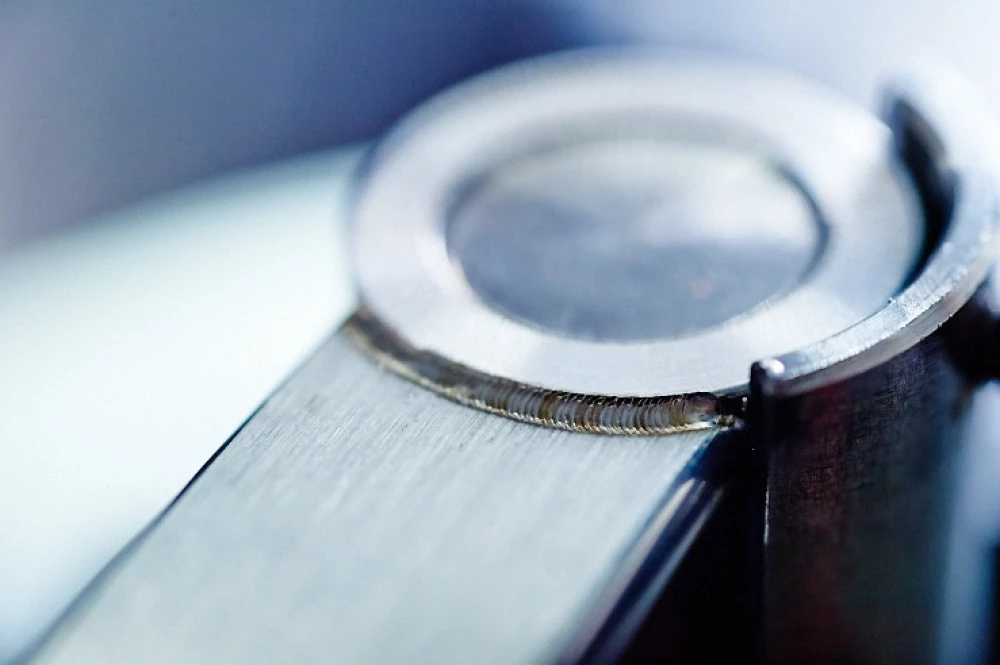
Advanced aluminum-silicon (Al-Si) alloys are excellent weight savings choices in seam sealing aerospace packages. When using aluminum, you must choose the correct alloy for each part of the package. For example, 6061-grade aluminum has good properties. On the other hand, 6061 aluminum cannot be welded to itself, so you will have to use aluminum 4047 for the different lid thicknesses. The latter material has more silicon, which increases weldability.
Once you select the material and qualify it from one vendor, you should continue to use only a particular vendor. Experience has shown that some material may meet the specification while including filler or trace substances that can negatively affect the weld. In addition, vendor changes can lead to weld quality deterioration. This is a classic problem that might occur in aluminum and some stainless steel, as crack runs down the middle of the weld after buying materials from another vendor.
The essential point is that attempt to save money by selecting an unknown vendor on a completed device worth $5,000 to $50,000 may end in huge failure. If there is a sign that the weld is unsuccessful or does not hold, you might have to remove the lid, and there is a risk of damaging the part. Even though you successfully remove the lid and re-seal the package, the part might not remain pristine and functioning as specified.
High-yield welding depends upon the absolute cleanliness of the surface. That means there are no contaminants, oil, or grease in the weld area. Cleanliness is also crucial when more difficult welds are to be made. That’s why all parts should be prepared, cleaned, and degreased prior to welding.
For Kovar, Invar, and stainless steel support, material cleaning includes ultrasonic cleaning, ethanol, and de-ionized water. Aluminum is exceptionally reactive to oxygen, so a layer of aluminum oxide will remain no matter how well the surfaces have been cleaned. Therefore, in addition to the cleaning methods we suggested, successful aluminum welding should also include using a wire brush immediately prior to welding.
Plating Base and Lid On A Material
Plating includes depositing a thin surface on a base material or lid, which results in ensuring corrosion protection.
Many manufacturers buy a base material from one vendor, machine it, and then send it to a plating house, which plates it according to the specifications provided.
The plating house after finishing the job sends back plated base material which is ready to be worked on. Finally, the lid is sealed to the top of the base.
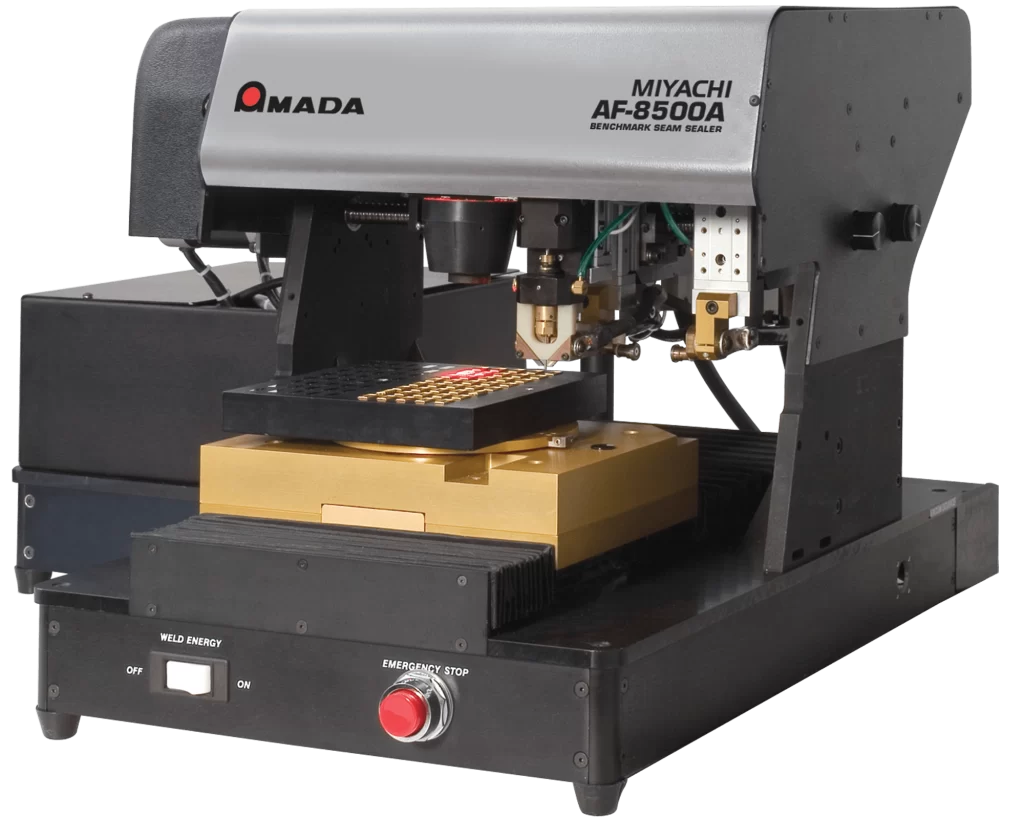
Manufacturers usually use nickel only or nickel/gold for the base and lid plating before seam sealing. The plating must be completed by electrolytic plating, which is a galvanic process that involves immersing the part in an electrolyte. The electrolyte has one or more dissolved metal salts, with other ions that block the flow of electricity. The plated part is the cathode, and the anode is the metal to be plated on the part.
Most commonly, plating is done with nickel and then overlaid with gold. As the thin layers are essential in the laser welding process, the nickel is plated from 200-320 microinches, while the gold is thinner than 30 micro inches per surface. Apart from the expense that results from gold plating, if the gold is too thick, it can cause cracking in the weld.
Similar to material choice, it is imperative to select a plating vendor source and then stay with it. Keep in mind that some vendors might apply plating layers too thickly, especially if they switch from resistance welding to laser welding. That’s why you need to make sure plating thickness is within stated boundaries, especially for gold.
Welding Kovar or Invar usually requires no plating in the weld area. However, a small amount of nickel and gold is acceptable. When welding aluminum, there shouldn’t be absolutely any plating. That’s why the plating house should mask the part, so the weld zone is free of plating. Alternatively, they may machine the surface in the weld area.
Joint Geometry For Lid/Base Weld
Most commonly, there are three joint types used in laser welding: butt, fillet, and lap joint. From a strict welding perspective, there are preferred geometries for package welding based upon the thickness of the lid and simplification of the laser alignment to the weld seam and part clamping.
Lap Weld Design
Lap weld geometry is typically used for packages with a maximum lid thickness of about 0.02 inches for ferrous materials and 0.01 inches for aluminum. The lap joint is the simplest method which requires only a 2-axes motion and minimal alignment. Using a lap joint results in the weld being more stable and easier to accomplish.
Keep in mind that the laser must penetrate the thickness of the lid that overlap to make the weld. If the main part of the lid is thicker than 0.01 / 0.02-inches, it can be machined down near the area of the weld to achieve a correct thickness.
Fillet Welds Geometry
Fillet welds are used for packages with a lid thickness of about 0.02 inches. The lid is welded with a straight-down weld head, which requires only 2-axes motion. However, compared to the lap weld, the laser must closely follow the joint line. Otherwise, there might be an issue with incomplete weld fusion.
Side Butt Weld Design
A side butt weld is a simple flat lid, and the biggest advantage is that it can be used no matter the thickness of the lid. It requires a 3-axes motion and good joint line following. The weld is made using the laser beam horizontally using gravity to aid with part tooling and load/unload. Note that the butt geometry is the most efficient in terms of power as the laser penetrates directly down the interface line between the lid and base.
Recessed Butt Welds
Recessed butt welds require complex part machining. The base and lid fit tolerance should be lesser than 0.002-inches. In addition, it requires a 2-axes motion and good joint line following.
Weld gap tolerance
Laser welding requires critical tolerance, which is the gap between the weld faces. Fundamentally, all four weld geometries, require the maximum allowable gap of 0.002 inches.
It is also worth noting that complying with these tolerances is a simple tooling proposition for all joints except the recess butt, which requires not only that the laser closely tracks the joint line but that the lid is machined to fit into the recess with less than 50 microns gap (0.002-inches).
Thermal Input and Distortion
In addition to the crucial factors we listed, in certain applications heat input can cause an issue, especially in joining small packages, but it can occur in larger packages where there is concern about distortion.
That’s where laser welding as a low-heat input process thrives. As a result, you can precisely control the laser power to minimize heat input.
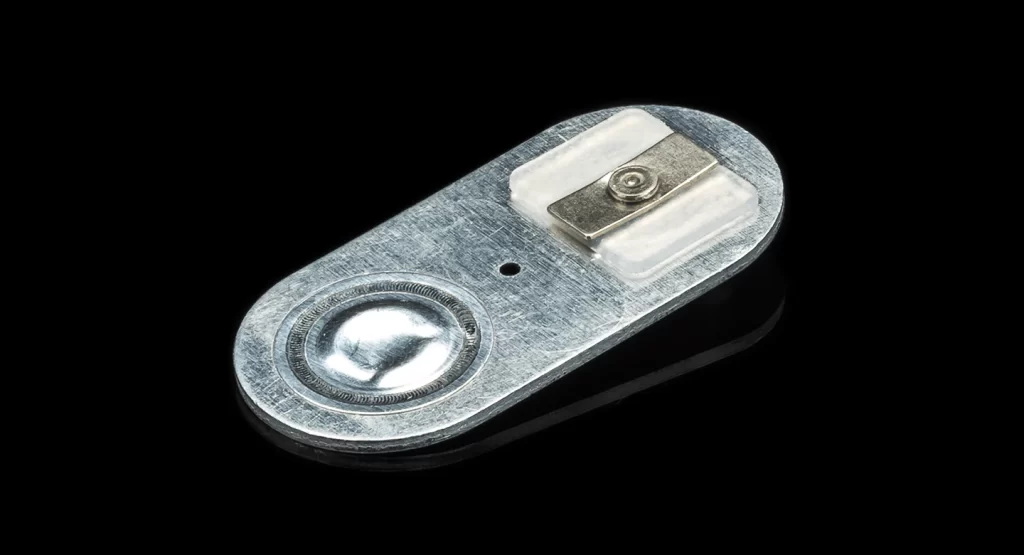
Another factor you should ensure is maintaining consistent heat input throughout the entire length of the weld. That includes both straights and 90-degree corners while optimizing process speed. Fully integrated motion and laser control software can make suitable adjustments based on speed and acceleration/deceleration profiles, resulting in adequate welds.
If the package is sensitive to temperature or high power input is required, conformal tooling known as chill plates can be used. These plates are made of copper and sometimes water-cooled, are used to draw heat from the weld. That way, you maximize power and welding speed without overheating or damaging components.
Some package bases have a metal top section bonded to alumina. In that case, a certain metal thickness is needed to prevent the alumina from cracking or the alumina/metal bond from contaminants. A metal of at least 0.06 inches thick is recommended to prevent overheating.
Laser Welding Systems
Configuring the right laser welding system is important to seam sealing success of over 99%. The elements of a laser welding system include the laser, beam delivery, the focusing head, the process, glovebox enclosure, and tooling, with a fully integrated laser, motion, and environment software package. Each part is equally important to successful welding.
Final Thoughts
In summary, manufacturers who want to ensure hermetic seam sealing in even the most aggressive environments should control their manufacturing processes. You can achieve that by carefully selecting material, following plating guidelines, choosing quality vendors (and staying with them once qualified), and selecting joint geometry that works best for the particular application.





